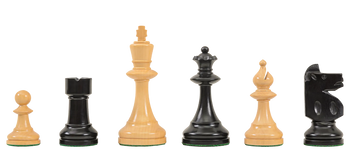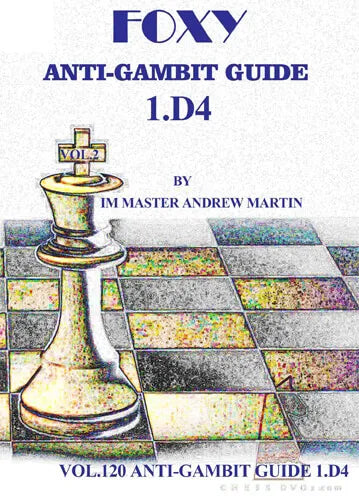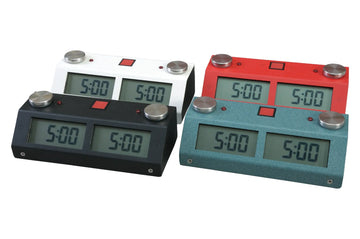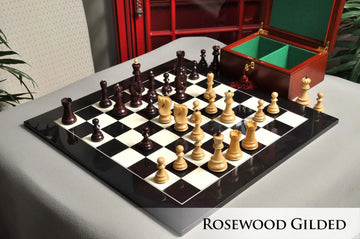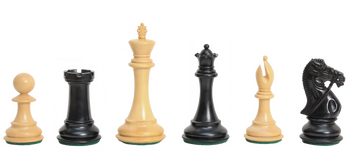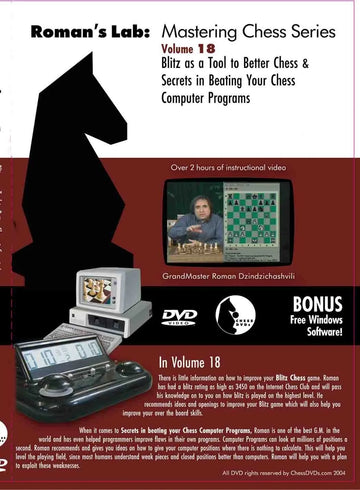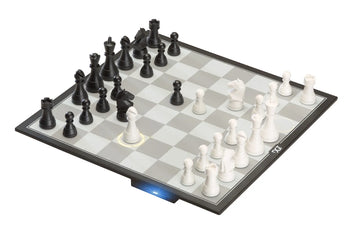Best for Blitz and Bullet Games—The Englund Gambit
In our guide to the 10 Best Openings for Black, we heralded the Englund Gambit as the best choice for blitz and bullet games. Brimming with tricks and traps, it’s the perfect chess opening to ensnare your opponent when there’s little time on the clock! In this article, we’ll be sharing statistics that prove it.
While the Englund Gambit main line is too audacious to be recommended for longer, more serious games, a lesser-known continuation known as the Hartlaub-Charlick Gambit is a rare gem that works wonders even at longer time controls!
Let’s get acquainted with both lines so that your games vs. 1.d4 will never be dull again!

Englund Gambit Statistics in Blitz and Bullet Games
The Englund Gambit kicks off with a reckless-looking counter to the Queen’s Pawn Opening: 1.d4 e5.

The statistics at this point are already surprisingly attractive. From 78 million online blitz and bullet games played at club level (1000-2000 Elo), 1...e5 wins an average of 49.5 points from every 100 games. That’s a better score than the Indian Game (1…Nf6) and far better than the symmetrical Queen’s Pawn Opening (1…d5).

Yet the statistics for the Englund Gambit suddenly get even more convincing once the main line is followed. The figures below represent move four of the main line after White plays the most typical (and best) moves.

Yes, upon playing 4.Qb4+, Black wins 60 points out of 100 games! What could account for this? Some terrible traps lie in wait for White if your opponent doesn’t know the best moves. Let’s find out more!
The Englund Gambit Main Line
In the Englund Gambit main line, play continues: 1. d4 e5 2. dxe5 Nc6 3. Nf3 Qe7 4. Bf4 Qb4+

From b4, your queen launches a triple fork on Black’s bishop, king, and b2 pawn. While the attack looks immediately impressive, it's actually relatively harmless and a weak move for Black if White knows the right moves!
Play continues with 5. Bd2 Qxb2. Black has equalized on pawns, but the damage is superficial. As long as White doesn’t stumble into a trap, that is! White now has two options to protect its rook. 6. Nc3 or 6. Bc3 Which one would you choose?

6.Bc3
In this situation, 22% of players play 6.Bc3. At first, it looks like a great move—threatening Black’s queen while protecting the rook in one shot. Yet it’s the very blunder that loses White the game! Black now swoops in with 6...Bb4, pinning the bishop and renewing its threat on the rook.
What would you play as White now?

7. Qd2—Checkmate in 8 Moves
If you thought 7.Qd2 would be a good way to save the bishop and rook, you would have just lost the game! After bishops are exchanged, White has left the back door open for Black’s queen to enter the king’s chamber.
Played in 31% of games, it’s astonishing how many opponents lose the game so early on! 7. Qd2 Bxc3 8. Qxc3 Qc1# and it’s checkmate.

7.Bxb4 – White Sacrifices a Knight (or Queen!)
The best way for White to avoid calamity is to exchange bishops (7.Bxb4 Nxb4), yet it’s only slightly more promising!
Now, White must sacrifice its knight with 8.Na3 to save its queen! Any other move and 8...Nxc2+ means White’s only way to defend its king is to sacrifice its queen! Either way, you should win the game.

6.Nc3 and White’s Way to Beat the Englund Gambit
Of course, there is a much better option for White! After 5...Qxb2, White’s best move is 6.Nc3. This protects the rook and puts Black on the back foot. Notice how White is well-developed while Black is still on the starting blocks. Black’s infiltration has amounted to nothing except winning back the pawn that it sacrificed in the beginning.
Black’s best move now is 6...Bb4, yet 7.Rb1 is about to follow, and a strong attack is on its way. Can you see how? (1. d4 e5 2. dxe5 Nc6 3. Nf3 Qe7 4. Bf4 Qb4+ 5. Bd2 Qxb2 6. Nc3 Bb4 7.Rb1)

Did you spot the winning attack? After Black retreats its queen (7...Qa3), most players play 8.Rb3. Yet White has a much better move! Only played in 14% of games, 8.Nd5 forks Black’s bishop and another fork on c7, which threatens to win a rook!
If Black tries to neutralize both with 8...Ba5, you simply chase it with 9.Rb5. Black is now forced to trade bishops and then move its king to defend c7. Black is left without castling rights and remains undeveloped, ill-prepared for White’s continued attack.
(1. d4 e5 2. dxe5 Nc6 3. Nf3 Qe7 4. Bf4 Qb4+ 5. Bd2 Qxb2 6. Nc3 Bb4 7. Rb1 Qa3 8. Nd5 Ba5 9. Rb5 Bxd2+ 10. Qxd2 Kd8)

This line exemplifies why the Englund Gambit main line is such a gamble! If White falls for the trap, they lose the game, yet if they find the right moves, they’ll be hot on your heels! It’s one reason why this opening is never seen at Grandmaster level.
A More Solid Approach 2...d6—The Hartlaub-Charlick Gambit
A more solid way to play the Englund Gambit is to follow with 2...d6—the Hartlaub-Charlick Gambit. This is far less risky, wins Black rapid development, and threatens to launch a galloping kingside attack that can win the game very quickly.
Following 2…d6, White will nearly always snap up the extra pawn, after which you recapture with your dark-squared bishop (1. d4 e5 2. dxe5 d6 3. exd6 Bxd6)

Castle Long and Attack!
The beauty of the Hartlaub-Charlick Gambit is that you have one simple strategy to mount a swift, aggressive attack, almost irrespective of what White plays.
By developing all of your queenside pieces (including ...Bg4) as rapidly as possible and long-castling, you're perfectly set up for a fierce attack on White's kingside! Notice how your rook is also lined up on the open d-file with White’s queen.
In many blitz and bullet games, White may fail to spot the danger altogether. Castling kingside prematurely is especially fatal for White, as Bxh2+ can discover an attack on White’s queen and win the game on the spot:
1. d4 e5 2. dxe5 d6 3. exd6 Bxd6 4. Nf3 Nc6 5. Nc3 Bg4 6. e3 Qe7 7. Be2 O-O-O 8. O-O Bxh2+

h7-h5 and Kingside Attack
Even if they don't blunder their queen, your opponent will usually castle kingside. Now that you’ve castled on opposite sides, it's a race to attack each other’s forts as fast as possible!
In most lines, immediately after White has castled, you can commence your attack with h7-h5. This does two things. Firstly, the pawn threatens to continue its advance and storm White’ camp. With the g-pawn to follow, you threaten to open up White’s defenses and attack down the open files.
Secondly, your pawn on h5 serves as a cunning support to the g4 square. Now, if White captures any piece on g4, you recapture with your h-pawn, and your rook is suddenly unleashed down the h-file!
Let’s take an example:
1. d4 e5 2. dxe5 d6 3. exd6 Bxd6 4. Nf3 Nc6 5. Nc3 Bg4 6. e3 Qe7 7. Be2 O-O-O 8.Bd2 Nf6 9. O-O h5 10. Qe1. Now, can you find the winning moves for Black?

Start by getting rid of White’s defending knight and then using the Greek Gift Sacrifice on h2 (Bxf3 11. Bxf3 Bxh2+ 12.Kxh2). Follow up with a check from your knight (12...Ng4+). Now, if your opponent captures your knight on g4, they've just given you the game. After you recapture, the h-file is flung open, just right for a devastating attack from your rook and queen!
1. d4 e5 2. dxe5 d6 3. exd6 Bxd6 4. Nf3 Nc6 5. Nc3 Bg4 6. e3 Qe7 7. Be2 O-O-O 8.Bd2 Nf6 9. O-O h5 10. Qe1 Bxf3 11. Bxf3 Bxh2+ 12. Kxh2 Ng4+ 13. Bxg4+ hxg4+

10.h3
To reaffirm how deadly this setup is for White, let’s take another example. On move 10, White instead plays 10.h3. Again, remove White's defending knight with 10...Bxf3.
Now, your move to remember is 11.Qe5, lining up a mating battery toward h2. White is then forced to spoil its pawn structure to prevent checkmate with 12.g3. Now, after 12...h4, it’s all too easy to see why White is in serious trouble.

The extraordinary thing about this variation is that it reflects all of White’s most frequently played moves! From here, Black scores a staggering 72% win rate. Now, this is an opening that could skyrocket your Elo very swiftly!
Conclusion
The Englund Gambit boasts an impressive arsenal of traps that can win the game within the first few moves. While the main line is too reckless to be attempted at longer time controls against strong opponents, it’s the perfect opening to catch White off-guard in blitz and bullet games.
The continuation known as the Hartlaub-Charlick Gambit, on the other hand, is a more solid continuation that is backed up by exceptional statistics at all time controls, even against stronger opponents!
These fun, lesser-known openings are great fun and make a refreshing change to the stagnant, predictable games that often follow after 1.d4.

